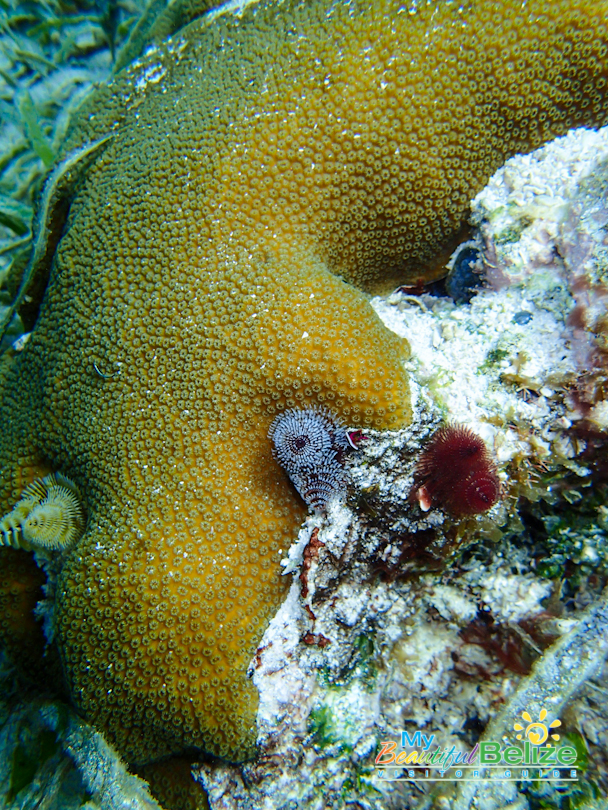Have no fear tree decorators, you won’t find any Christmas Tree Worms squirming among your lights and candy canes! Christmas Tree Worms (Spirobranchus giganteus) are actually ocean-dwelling worms that resemble tiny Christmas trees because of their shape and brilliantly hued tentacles. These tubular, segmented worms aren’t very big, averaging about 1.5 inches in length, and they dwell in coral reefs in tropical waters all over the world.

The Christmas Tree Worm’s name is derived from the brightly colored, tiered spiral radioles (feather-like tentacles) that protrude from its body, giving it the appearance of a tiny fir tree. The radioles typically span a little over an inch long, and come in a wide variety of colors including blue, orange, yellow, white, red and pink. It’s these colorful radioles that dot the surfaces of live coral and grab the attention of scuba divers and snorkelers.
These festively adorned little worms are passive filter feeders that are content to sit and wait for home delivery. They use their radioles to absorb phytoplankton and microorganisms floating in the water. The radioles sort the food particles, discarding the large ones and sending the small ones to the digestive tract. Grains of sand are deposited in sacs to be used later for building tubes. The radioles are also used for respiration and are sometimes referred to as gills.

Christmas tree worms do not mate, but engage in external fertilization. Males and females cast their sperm and eggs into the open water. The sperm fuse with the eggs and fertilization takes place. The fertilized eggs develop into larvae that settle onto the surface of a coral reef and burrows into it, creating a deep hole. The larva remains concealed in the hole as it develops into an adult worm. It secretes a calcareous shell around its body as added protection. Content in its cozy den, the Christmas Tree Worm remains concealed in its burrow for its entire life, only partially emerging to feed.
True to its reclusive nature, the Christmas Tree Worm does not appreciate uninvited company. It’s extraordinarily sensitive to touch, light, shadows and motion. Upon detecting any of these intrusions, it quickly retracts and disappears into its burrow. To further make its point, it covers the top of its burrow with a little lid called an operculum.


